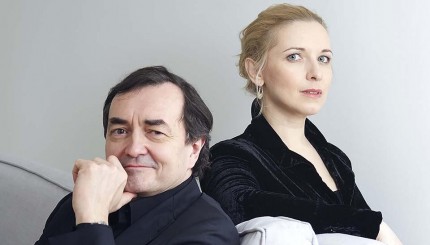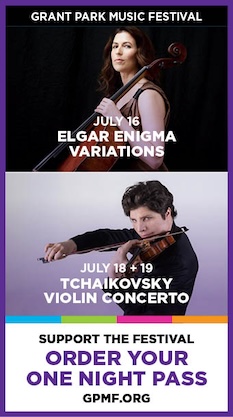Boulez’s piano music is a cold dish best served in small helpings

Though Pierre Boulez has been a local legend as principal guest conductor of the Chicago Symphony Orchestra and since 2006 as conductor emeritus, most CSO patrons have had limited exposure to his compositions, and fewer still know the finer points of his place in history as a titan of postwar experimentalism. While his cool and exacting conducting style has formed the basis of his public persona since the 1960’s, his uncompromising dedication to daunting compositional complexity has remained intact.
As part of his 90th birthday celebration Sunday at Orchestra Hall, the audience was treated to a marathon survey of his complete works for solo piano, with a two-piano work added for good measure.
There was a well-documented evolution in his style over the decades, but at no point did change represent a concession to popular tastes, even as younger composers explored avenues that seemed to thumb their noses at his generation’s achievements. Pianists Pierre-Laurent Aimard and Tamara Stefanovich presented the survey in chronological order, with brief oral introductions.
Boulez’s first three piano works (and half the program) were composed before the age of 23, undercutting somewhat the performers’ rationale for the order as a means of tracing his development. Two hours and forty minutes of such forbidding music seemed excessive to this listener, but those who stayed to the end appeared enthused and fortified by the experience. It would have been more palatable without the piano duo, though perhaps the prospect of such a mammoth survey proved ultimately too daunting even for the indefatigable Aimard.
Difficult music is easier to digest in small bites, a fact that partly explains the strong impression left by the composer’s early Douze notations. Each of these sonic aphorisms contained material that was developed, however fleetingly, in ways that were more easily recognized than in most of the later pieces. Mécanique et tré sec was an exuberant 25-second outburst, delivered by Aimard with high-spirited vigor. The second movement of his Sonata No. 1 began with hyperactive bursts reminiscent of Webern, but with the welcome addition of a vigorous, even pulse for a relatively extended span.
The monumental Sonata No. 2 is by far his most well-known keyboard work, and has been considered a rite of passage for new-music pianists since Maurizio Pollini’s legendary recording a half century ago. Stefanovich took the beast on her shoulders with an utterly compelling reading, seemingly unencumbered by its notorious difficulty. Amidst the turmoil, one found oneself most drawn to calmer moments, including the delicate, sparse patterings of the opening bars of the second movement.
Aimard returned to the stage for Sonata No. 3, a work that presents structural options to performers in ways that reflect his contemporaneous friendship with John Cage. The pianist clearly took pleasure in the uncertainties, delivering a reading rich in rhetorical flourishes, no matter the dizzying pace of thematic development. The second book of Structures for Two Pianos adopts similar strategies, and here the pair delivered their most theatrical performance of the afternoon.
There is a 38-year gap between the Third Sonata and his next keyboard work, Incise, a piano competition piece from 1994. Boulez seems more stylistically relaxed by this point, but there was nothing calm in Stefanovich’s blistering account. It might seem absurd that Boulez would be asked to provide an addition to an album meant for young pianists, but the delightful Une page d’épheméride apparently fit the bill, although one can hardly imagine it turning up in a fourth-grade recital alongside Beethoven’s Für Elise.
As the recital progressed one strained to hear the links between the programmed works and those by earlier composers that were described by the performers and program annotator. Was the influence of Beethoven in the Second Sonata actually perceptible in any concrete way, even after this and many earlier hearings? No doubt parallels with the rubato of Mahler and Wagner can be found in Boulez’s rhythmic constructions. But how relevant are these connections for most listeners when the threads of influence can only be spotted with a trained eye under a microscope on the written page, but not intuited by the ear in the concert hall?
I look forward to hearing these pieces again, but preferably removed from the context that was intended to sharpen one’s perception. Isolated exposures rather than full immersion seems a better entry point–in the unlikely assumption that these works find their way into more pianists’ repertoire.
Posted in Performances



Posted Mar 17, 2015 at 6:50 am by Jeff Rice
Traversing the music of most any composer in a single concert might be a daunting act. I could never handle a 2 1/2 hour performance of Chopin, for example. But in this case, the performance of Boulez’s music was seriously educational as well as aesthetically pleasing and likely never to occur again in my lifetime.
I would prefer that people do not call Boulez’s music “difficult” unless one is prepared to do the same for Beethoven’s late quartets or piano sonatas or, for that matter, Bach’s WTC. These pieces are also difficult, we are simply more used to them. This was an phenomenal experience, exhausting, more one I would not have missed.